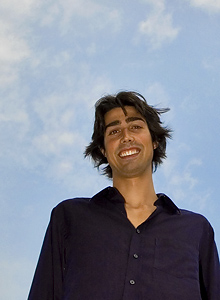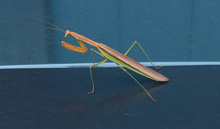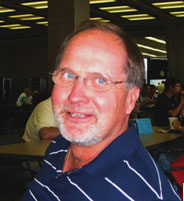 | Monday, August 28, 2006 |
|
Monday, August 28
Tuesday, August 29
Click here for a full calendar with links to additional information.
|
|
|
Secon Level 3 |
|
Monday, August 28 -Wisconsin Cheese -Corned Beef Reuben -Stuffed Chicken Breast -Mostaccoli Al Forno -Chicken Oriental Wrap Pineapple -Assorted Slice Pizza -Pacific Rim Rice Bowl The Wilson Hall Cafe accepts Visa, Master Card, Discover and American Express. |
|
Wednesday, August 30 Lunch -Wild Rice and Grilled Duck Salad -Steamed Snow Peas -Amaretto Cheesecake
Thursday, August 31
Chez Leon Menu |
| Fermilab Today is online at: http://www.fnal.gov/today/ Send comments and suggestions to today@fnal.gov Fermilab Today archive Hurricane Relief Page Fermilab Today PDF Version Fermilab Result of the Week archive Fermilab Safety Tip of the Week archive Linear Collider News archive Fermilab Today classifieds Subscribe/Unsubscribe to |
| Evidence of string theory written across the sky? | ||
| ||
|
Usually, string theory conjures images of things that are very small. But given enough energy, says Fermilab astrophysicist Mark Jackson, there's no reason strings couldn't stretch out be really big. That's the idea behind "cosmic strings," which are very long strings from the early, energetic universe. "We call them cosmic strings because they would be so big they would stretch across the whole sky," said Jackson.
Jackson recently published a paper that refines calculations for detecting cosmic strings. Like cracks in frozen water, strings created just after the Big Bang might still stretch across the sky as imperfections frozen into our cooling universe. "But they don't just sit there, they wiggle around at the speed of light," said Jackson. "Every so often they might hit." As they hit, cosmic strings might snap. "Straight bits might fly toward each other, then re-form into a pattern," Jackson said, sketching a variety of near-right angles formed from longer, perpendicular lines.
Physicists can predict what kinds of angles they should see in the sky, then look for them in two ways: by watching how light bends, and by using gravity-wave detectors like LIGO and VIRGO. "The string has energy, has tension, and so we know from Einstein's theory of gravity that whenever you have energy, it warps the space around it," said Jackson. When the string warps the space around it, light traveling into that space gets distorted. It bends light so you see a double image. Jackson's refinements might help physicists recognize cosmic string patterns when they find these double images. "It might be the first evidence for string theory if we actually saw these things," said Jackson.
|
|
CNN.com, August 25, 2006: Telescope set to reveal 'Big Bang' (CNN) -- An ambitious project to build the world's largest radio telescope high in the Chilean Andes looks set to give astronomers their best ever view of deep space -- and provide them with a dramatic window back through time to the formation of the universe itself. The Atacama Large Millimeter Array (ALMA), currently being built in the Atacama Desert, northern Chile, will enable scientists to observe sub-millimeter radiation waves, giving them a far more detailed picture of the universe than has previously been possible with either optical or infrared telescopes.
The telescope, which is due to be completed by 2012, will consist of 66 radio antennae spread across the Llano de Chajnantor plateau, 5,000 meters above sea level.
|
| Accident investigation | ||
Harbour has found that most people believe they were doing the right thing when the accident occurred. Therefore, investigators should always look at the decision-making of participants based on what they understood at the time. Through his study of accidents, Harbour has identified the attributes that represent a safety culture focused on accident prevention, which are important in evaluating any organization:
|
|
Benefits survey
Blood drive
Brown Bag Seminar on Avian Flu |


